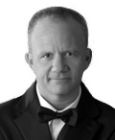
Child Development
On the hand-crafting of genius
Most geniuses are made by hand.
Posted November 25, 2008
William James maintained, "Genius, in truth, means little more than the faculty of perceiving in an unhabitual way." People like you and me do not achieve this through mental power, but through knowledge and practice. For example, people could have made gliders hundreds of years earlier than they did, except that inventors, such as Leonardo da Vinci, were obsessed with the flapping wings of birds. Once people separated lift (the wing) from propulsion (the engine), they made rapid progress in airplane technology. In this sense, the airplane was what's called a "postmature discovery." Where did the breakthrough come from? Johann Bernoulli worked out the mathematics in 1738. If the development of the airplane was a function of Newton-like genius, humanity should have had airplanes soon after. It was not until 1799 that George Cayley successfully built a glider that could carry a person (some unsung ten-year old boy). It took another eighty-five years until someone came up with a usable wing. According to John Anderson's Introduction to Flight, in 1884 Horatio Phillips made this contribution by experimenting with "every conceivable form and combination of forms" in a wind tunnel.
Surprisingly, even some big pure-science breakthroughs are the result of the kind of genius that you and I (can) have. Earth scientist Robert Hazen observed, "Watson and Crick's brilliant deduction [of the structure of DNA] was arrived at more by inspired guesswork and tinkering with models than by any step-by-step logic." The point is that Watson and Crick contributed by breaking the known rules of the day-not with genius of mind but with persistence of hand. They did so by tinkering and by knowing everything there was to know about the domain—and then learning one more thing. Bronowski grasped, "The hand is more important than the eye." This kind of genius is within the reach of each of us. In their book The Social Life of Information, John Seely Brown and Paul Duguid provided an example:
"There's a story told of a typesetter working on a Greek text at the Oxford University Press who announced he'd found a mistake in the text. As the typesetter couldn't read Greek, his colleagues and then his superiors dismissed the claim. But the man insisted. So finally an editor came down to the compositing room. At first, she, too, dismissed the idea, but checking more closely, she found there was an error. Asked how he knew, the typesetter said he had been hand-picking letters for Greek texts for most of his professional life and was sure that he'd never made the physical move to pick the two letters in that order before."
In short, we can all tinker with our work until we get it right and therein lies genius.
Anderson, J. 1978. Introduction to Flight. New York: McGraw-Hill.
Bronowski, J. 1974. The Ascent of Man. London: Little, Brown and Company.
Brown, J. and P. Duguid. 2002. The Social Life of Information. Boston: Harvard Business School Press.
Hazen, R. 2002. "The Joy of Science." Produced by The Teaching Company. Chantilly, VA.
James, W. 1978. The Writings of William James: A Comprehensive Edition, Edited by J. McDermott. Chicago: University of Chicago Press.
Excerpted from Lasting Contribution: How to Think, Plan, and Act to Accomplish Meaningful Work by Tad Waddington. Find out more at http://www.lastingcontribution.com.

